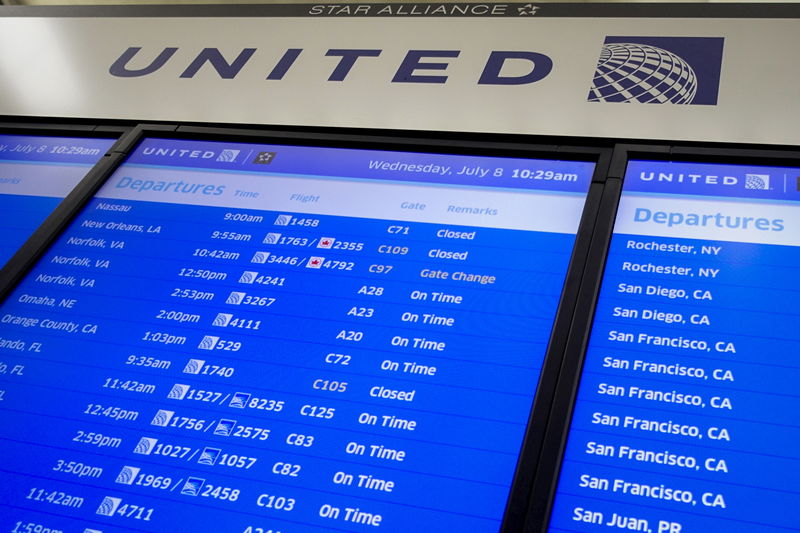This post was originally published on this site
https://i-invdn-com.akamaized.net/trkd-images/LYNXMPEFB300F_L.jpg © Reuters. The United Airlines timetable is pictured in Newark International Airport, New Jersey
© Reuters. The United Airlines timetable is pictured in Newark International Airport, New JerseyBy Tracy Rucinski
CHICAGO (Reuters) – United Airlines Holdings Inc (O:) announced on Tuesday an order for 50 Airbus SE (PA:) A321XLR jets to fly between the U.S East Coast and Europe, becoming the latest U.S. airline to ink a deal for the European planemaker’s new passenger jet.
The long-range A321XLR jets will replace United’s 53 Boeing 757-200 planes beginning in 2024, the Chicago-based planemaker said, flying to cities like Porto, Portugal and other potential new destinations.
United’s 757 planes will reach the end of their lifespan in about a decade and Boeing Co (N:) is not building any more of the large single-aisle model.
Instead, the U.S. planemaker has been considering a new twin-aisle plane, provisionally known as the NMA, but has delayed a launch decision until 2020 while it manages the ongoing global grounding of its 737 MAX jets following two fatal crashes.
United’s chief operating officer Andrew Nocella told reporters the airline has worked closely with Boeing on the potential new aircraft and is still open to orders if the planemaker decides to move forward with developing the NMA.
Meanwhile, U.S carriers including American Airlines Group Inc (O:), JetBlue Airways Corp (O:) and Spirit Airlines Inc (N:) have agreed orders for Airbus A320neo-family jets.
Among the benefits of the A321XLR is a 30% lower fuel burn per seat compared to previous generation aircraft, United said.
United has also ordered the larger A350 widebody jets but said it is deferring delivery of those jets until they are needed in 2027.
Its A321XLR order is the second for a U.S. carrier following tariffs that the United States is imposing on European-made aircraft.
Fusion Media or anyone involved with Fusion Media will not accept any liability for loss or damage as a result of reliance on the information including data, quotes, charts and buy/sell signals contained within this website. Please be fully informed regarding the risks and costs associated with trading the financial markets, it is one of the riskiest investment forms possible.

